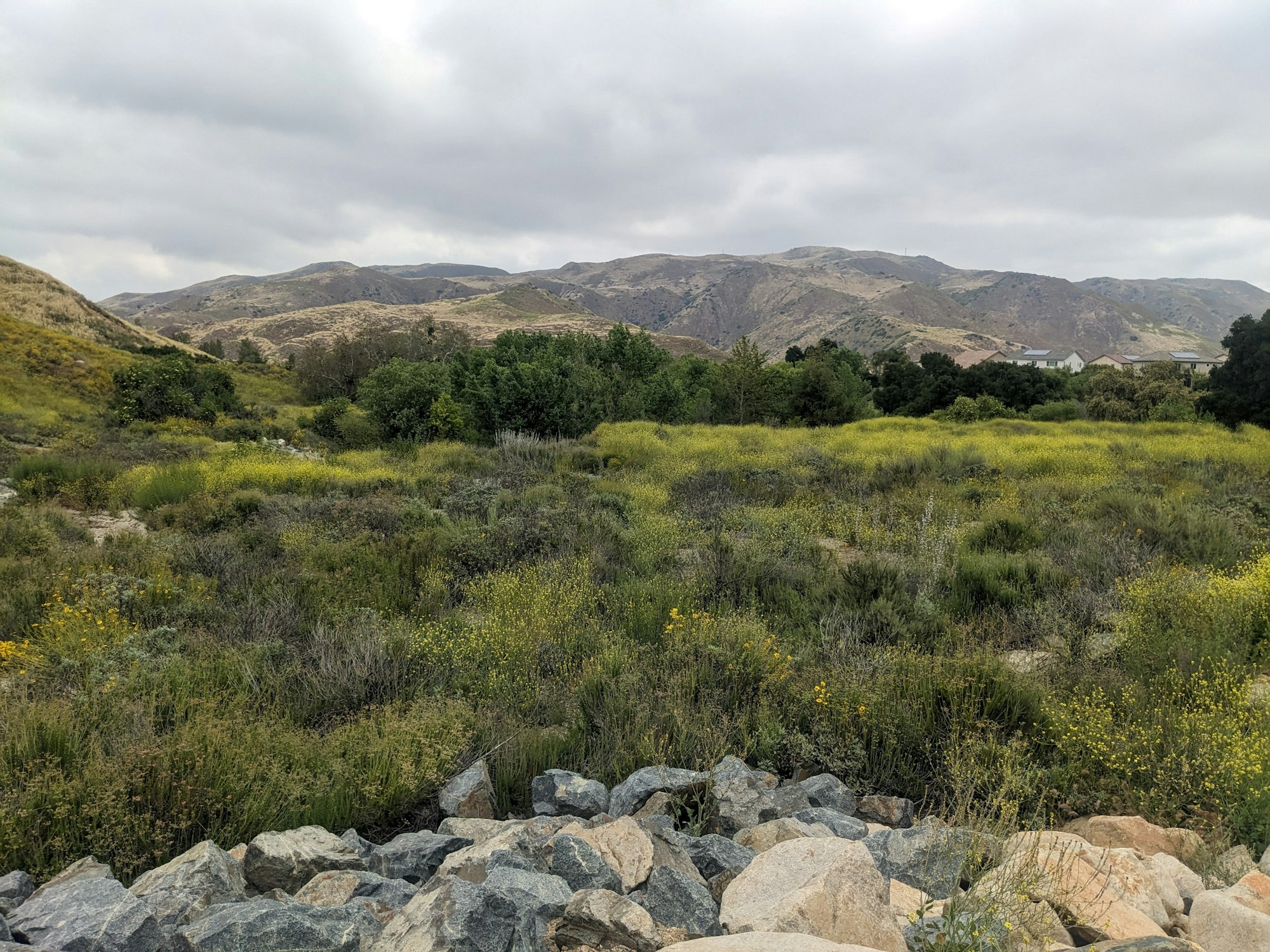Preserving Habitat
The Riverside-Corona Resource Conservation District (RCRCD) preserves habitat by conserving land, repairing any existing damage, and then maintaining it in perpetuity.

The RCRCD conserves land by holding a conservation easement over it or by owning it in fee title and recording a restrictive covenant. Both of these methods protect the land by legally restricting the allowed use of the land to activities related to maintaining it as healthy natural habitat. Conservation easements are generally donated by the landowner to the district as part of a mitigation project or to receive a tax incentive. Fee title lands are often purchased as part of mitigation projects. RCRCD currently holds more than 2,000 acres as either fee-title lands or conservation easements.
When choosing land for conservation, RCRCD conducts an analysis to determine whether it is a good fit for preservation. This involves looking at factors such as location characteristics, the current habitat condition, whether there are any management practices required on or adjacent to the land that could conflict with maintaining healthy natural habitat, and whether there is current funding for maintaining the site.
RCRCD assesses location suitability by considering factors near the location that affect the overall health and sustainability of habitat there. These can be things such as whether the site is surrounded by development or is near existing healthy habitat or conserved land. The RCRCD also considers the benefits habitat at the potential location provides to wildlife and nearby habitat lands. Sometimes a preserve can be a buffer between urban development and a natural area. Sometimes it can be part of a wildlife corridor to connect otherwise isolated natural areas.

The RCRCD assesses habitat condition on the site to see if it is currently healthy and thriving or if there is room for improvement. If habitat needs improvement, RCRCD can use enhancement and restoration project funds to repair damage to the site. These types of projects often include funding for long term maintenance which allows RCRCD to sustainably maintain healthy habitat forever.
In order to ensure land can be sustainably preserved, the RCRCD researches existing management practices on and near the site, as well as easements or regulations that affect the site. A site could have beautiful habitat, but not be a good candidate for conservation because it has a maintenance easement, fire clearance zone, or other conflicting land use requirement. In the case of public trails, the RCRCD often works with landowners to exclude trail areas from areas to be conserved. The conservation process restricts public access to conserved lands so removing trail footprints early in the process prevents conflicting usage problems early.
